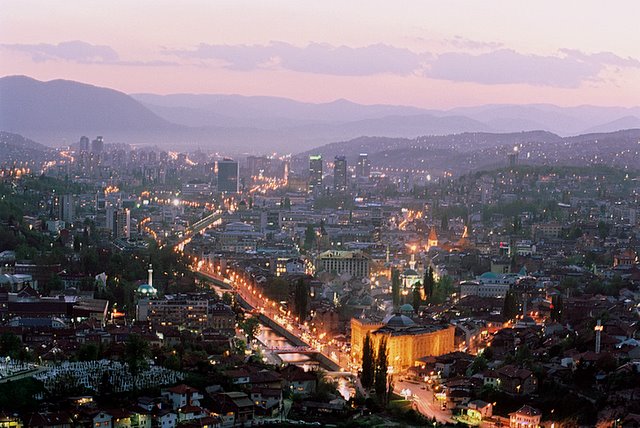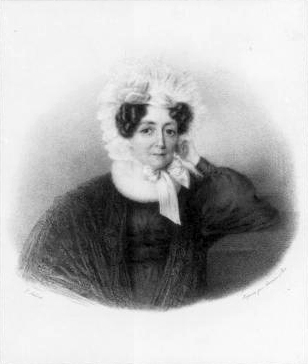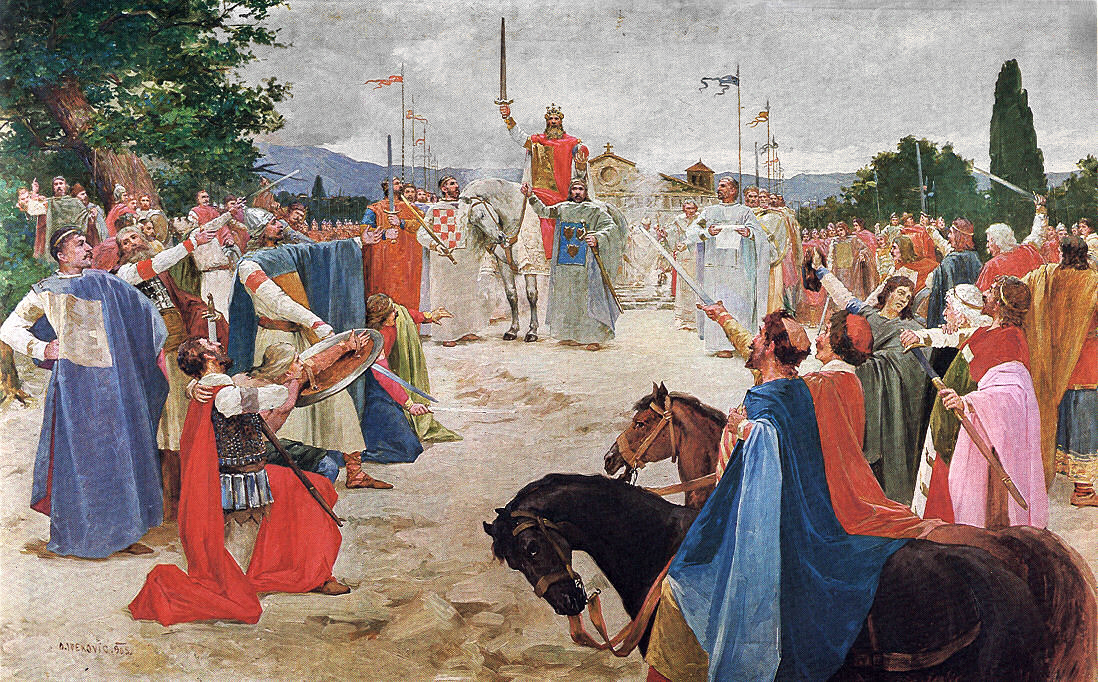|
Anđelka Bego-Šimunić
Anđelka Bego-Šimunić (23 October 1941 – 9 February 2022) was a Bosnian-Herzegovinian composer of Croatian descent. She taught at the Sarajevo Music Academy in Sarajevo, Bosnia and Herzegovina. She studied composition at the academy under Ivan Brkanović and Miroslav Špiler, earning a master's degree in 1973. Afterwards, she taught theory at the secondary music school in Sarajevo. She joined the staff of the academy in 1975, and later became assistant (1985) and full professor at the academy, where her students include Igor Karaca. From 1986 to 1992 she was president of the Bosnian composers’ association (1986–1992) and one of the principal organizers of the Days of Musical Creation festival. Her music is mostly neo-classical in style, influenced by Sergei Prokofiev's extended tonality and treatment of form, with elements of neo-romanticism, particularly in the style of Franz Liszt, and early Expressionism Expressionism is a modernist movement, initially in poetry ... [...More Info...] [...Related Items...] OR: [Wikipedia] [Google] [Baidu] |
Sarajevo Music Academy
The Sarajevo Music Academy or Music Academy , University of Sarajevo ( bs, Muzička Akademija Univerziteta u Sarajevu or MAS) is a Faculty of Music of University of Sarajevo in Bosnia and Herzegovina. History Sarajevo Music Academy was founded by the Decision of the National Assembly of Bosnia and Herzegovina on May 20, 1955 as the fourth such higher education institution in the former joint state, and the first established after the World War II. This Decision was published in the official Gazette of the People's Republic of Bosnia and Herzegovina No. 12/55, on June 8, 1955. The establishment of the Sarajevo Music Academy preceded a number of favorable prerequisites, such as the establishment of a network of music schools, the founding of the Sarajevo National Theater, Sarajevo Opera House, Symphony Orchestra RTV Sarajevo, the Institute for the study of folklore and the continuity of the Sarajevo Philharmonic Orchestra. At the founding of the Academy, the founders of this ... [...More Info...] [...Related Items...] OR: [Wikipedia] [Google] [Baidu] |
Sarajevo
Sarajevo ( ; cyrl, Сарајево, ; ''see names in other languages'') is the capital and largest city of Bosnia and Herzegovina, with a population of 275,524 in its administrative limits. The Sarajevo metropolitan area including Sarajevo Canton, East Sarajevo and nearby municipalities is home to 555,210 inhabitants. Located within the greater Sarajevo valley of Bosnia, it is surrounded by the Dinaric Alps and situated along the Miljacka River in the heart of the Balkans, a region of Southern Europe. Sarajevo is the political, financial, social and cultural center of Bosnia and Herzegovina and a prominent center of culture in the Balkans. It exerts region-wide influence in entertainment, media, fashion and the arts. Due to its long history of religious and cultural diversity, Sarajevo is sometimes called the "Jerusalem of Europe" or "Jerusalem of the Balkans". It is one of a few major European cities to have a mosque, Catholic church, Eastern Orthodox church, and syn ... [...More Info...] [...Related Items...] OR: [Wikipedia] [Google] [Baidu] |
Bosnia And Herzegovina
Bosnia and Herzegovina ( sh, / , ), abbreviated BiH () or B&H, sometimes called Bosnia–Herzegovina and often known informally as Bosnia, is a country at the crossroads of south and southeast Europe, located in the Balkans. Bosnia and Herzegovina borders Serbia to the east, Montenegro to the southeast, and Croatia to the north and southwest. In the south it has a narrow coast on the Adriatic Sea within the Mediterranean, which is about long and surrounds the town of Neum. Bosnia, which is the inland region of the country, has a moderate continental climate with hot summers and cold, snowy winters. In the central and eastern regions of the country, the geography is mountainous, in the northwest it is moderately hilly, and in the northeast it is predominantly flat. Herzegovina, which is the smaller, southern region of the country, has a Mediterranean climate and is mostly mountainous. Sarajevo is the capital and the largest city of the country followed by Banja Lu ... [...More Info...] [...Related Items...] OR: [Wikipedia] [Google] [Baidu] |
Neoclassicism (music)
Neoclassicism in music was a twentieth-century trend, particularly current in the interwar period, in which composers sought to return to aesthetic precepts associated with the broadly defined concept of " classicism", namely order, balance, clarity, economy, and emotional restraint. As such, neoclassicism was a reaction against the unrestrained emotionalism and perceived formlessness of late Romanticism, as well as a "call to order" after the experimental ferment of the first two decades of the twentieth century. The neoclassical impulse found its expression in such features as the use of pared-down performing forces, an emphasis on rhythm and on contrapuntal texture, an updated or expanded tonal harmony, and a concentration on absolute music as opposed to Romantic program music. In form and thematic technique, neoclassical music often drew inspiration from music of the 18th century, though the inspiring canon belonged as frequently to the Baroque and even earlier period ... [...More Info...] [...Related Items...] OR: [Wikipedia] [Google] [Baidu] |
Sergei Prokofiev
Sergei Sergeyevich Prokofiev; alternative transliterations of his name include ''Sergey'' or ''Serge'', and ''Prokofief'', ''Prokofieff'', or ''Prokofyev''., group=n (27 April .S. 15 April1891 – 5 March 1953) was a Russian composer, pianist, and conductor who later worked in the Soviet Union. As the creator of acknowledged masterpieces across numerous music genres, he is regarded as one of the major composers of the 20th century. His works include such widely heard pieces as the March from '' The Love for Three Oranges,'' the suite ''Lieutenant Kijé'', the ballet ''Romeo and Juliet''—from which "Dance of the Knights" is taken—and '' Peter and the Wolf.'' Of the established forms and genres in which he worked, he created—excluding juvenilia—seven completed operas, seven symphonies, eight ballets, five piano concertos, two violin concertos, a cello concerto, a symphony-concerto for cello and orchestra, and nine completed piano sonatas. A graduate of the ... [...More Info...] [...Related Items...] OR: [Wikipedia] [Google] [Baidu] |
Neoromanticism (music)
Neoromanticism in music is a return (at any of several points in the nineteenth or twentieth centuries) to the emotional expression associated with nineteenth-century Romanticism. Definitions Neoromanticism was a term that originated in literary theory in the early 19th century to distinguish later kinds of romanticism from earlier manifestations. In music, it was first used by Richard Wagner in his polemical 1851 article " Oper und Drama", as a disparaging term for the French romanticism of Hector Berlioz and Giacomo Meyerbeer from 1830 onwards, which he regarded as a degenerated form of true romanticism. The word came to be used by historians of ideas to refer to music from 1850 onwards, and to the work of Wagner in particular. The designation "neo" was used to acknowledge the fact that music of the second half of the 19th century remained in a romantic mode in an unromantic age, dominated by positivism, when literature and painting had moved on to realism and impressionism . A ... [...More Info...] [...Related Items...] OR: [Wikipedia] [Google] [Baidu] |
Franz Liszt
Franz Liszt, in modern usage ''Liszt Ferenc'' . Liszt's Hungarian passport spelled his given name as "Ferencz". An orthographic reform of the Hungarian language in 1922 (which was 36 years after Liszt's death) changed the letter "cz" to simply "c" in all words except surnames; this has led to Liszt's given name being rendered in modern Hungarian usage as "Ferenc". From 1859 to 1867 he was officially Franz Ritter von Liszt; he was created a ''Ritter'' (knight) by Emperor Francis Joseph I in 1859, but never used this title of nobility in public. The title was necessary to marry the Princess Carolyne zu Sayn-Wittgenstein without her losing her privileges, but after the marriage fell through, Liszt transferred the title to his uncle Eduard in 1867. Eduard's son was Franz von Liszt., group=n (22 October 1811 – 31 July 1886) was a Hungarian composer, pianist and teacher of the Romantic period. With a diverse body of work spanning more than six decades, he is considered to be o ... [...More Info...] [...Related Items...] OR: [Wikipedia] [Google] [Baidu] |
Expressionism (music)
The term expressionism "was probably first applied to music in 1918, especially to Schoenberg", because like the painter Wassily Kandinsky (1866–1944) he avoided "traditional forms of beauty" to convey powerful feelings in his music. Theodor Adorno interprets the expressionist movement in music as seeking to "eliminate all of traditional music's conventional elements, everything formulaically rigid". This he sees as analogous "to the literary ideal of the 'scream' ". As well Adorno sees expressionist music as seeking "the truthfulness of subjective feeling without illusions, disguises or euphemisms". Adorno also describes it as concerned with the unconscious, and states that "the depiction of fear lies at the centre" of expressionist music, with dissonance predominating, so that the "harmonious, affirmative element of art is banished". Expressionist music would "thus reject the depictive, sensual qualities that had come to be associated with impressionist music. It would endeavor ... [...More Info...] [...Related Items...] OR: [Wikipedia] [Google] [Baidu] |
1941 Births
Events Below, the events of World War II have the "WWII" prefix. January * January–August – 10,072 men, women and children with mental and physical disabilities are asphyxiated with carbon monoxide in a gas chamber, at Hadamar Euthanasia Centre in Germany, in the first phase of mass killings under the Action T4 program here. * January 1 – Thailand's Prime Minister Plaek Phibunsongkhram decrees January 1 as the official start of the Thai solar calendar new year (thus the previous year that began April 1 had only 9 months). * January 3 – A decree (''Normalschrifterlass'') promulgated in Germany by Martin Bormann, on behalf of Adolf Hitler, requires replacement of blackletter typefaces by Antiqua (typeface class), Antiqua. * January 4 – The short subject ''Elmer's Pet Rabbit'' is released, marking the second appearance of Bugs Bunny, and also the first to have his name on a title card. * January 5 – WWII: Battle of Bardia in Libya: Australian an ... [...More Info...] [...Related Items...] OR: [Wikipedia] [Google] [Baidu] |
2022 Deaths
The following notable deaths occurred in 2022. Names are reported under the date of death, in alphabetical order. A typical entry reports information in the following sequence: * Name, age, country of citizenship at birth, subsequent nationality (if applicable), what subject was noted for, cause of death (if known), and reference. December 25 * Chalapathi Rao, 78, Indian actor and producer, heart attack. (death announced on this date) 24 *Vittorio Adorni, 85, Italian road racing cyclist. * Cotton Davidson, 91, American football player ( Baltimore Colts, Dallas Texans, Oakland Raiders). (death announced on this date) *Franco Frattini, 65, Italian politician and magistrate, twice minister of foreign affairs, twice of public administration, European commissioner for justice (2004–2008), cancer. * Madosini, 78, South African musician. * Barry Round, 72, Australian footballer (Sydney, Footscray, Williamstown), organ failure. * Royal Applause, 29, British Thoroughbred raceh ... [...More Info...] [...Related Items...] OR: [Wikipedia] [Google] [Baidu] |
Women Composers
Women composers of Western classical music are disproportionately absent from music textbooks and concert programs that constitute the Western canon, even though many women have composed music. The reasons for women's absence are various. The musicologist Marcia Citron writing in 1990 noted that many works of musical history and anthologies of music had very few, or sometimes no, references to and examples of music written by women. Among the reasons for historical under-representation of women composers Citron has adduced problems of access to musical education and to the male hierarchy of the musical establishment (performers, conductors, impresarios etc.); condescending attitudes of male reviewers, and their association of women composers with "salon music" rather than music of the concert platform; and denial of female creativity in the arts by philosophers such as Jean-Jacques Rousseau and Immanuel Kant. All this needs to be considered in the perspective of restrictions ag ... [...More Info...] [...Related Items...] OR: [Wikipedia] [Google] [Baidu] |
Croats Of Bosnia And Herzegovina
The Croats of Bosnia and Herzegovina (), often referred to as Bosnian Croats () or Herzegovinian Croats () are the third most populous ethnic group in the country after Bosniaks and Serbs, and are one of the constitutive nations of Bosnia and Herzegovina. Croats of Bosnia and Herzegovina have made significant contributions to the culture of Bosnia and Herzegovina. Most Croats declare themselves Catholics and speakers of Croatian language. From the 15th to the 19th century, Catholics in Ottoman Bosnia and Herzegovina were often persecuted by the Ottoman Empire, causing many of them to flee the area. In the 20th century, political turmoil and poor economic conditions caused more to emigrate. Ethnic cleansing within Bosnia and Herzegovina in the 1990s saw Croats forced to go to different parts of Bosnia and Herzegovina, despite having lived in numerous regions prior to the Bosnian War. The 2013 population census in Bosnia and Herzegovina recorded 544,780 residents registering as o ... [...More Info...] [...Related Items...] OR: [Wikipedia] [Google] [Baidu] |






.jpg)
